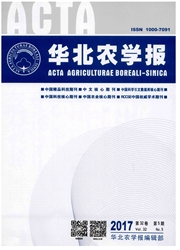

 中文摘要:
中文摘要:
After flower induction,some longan trees can successfully blossom and bear fruit,while others with similar tree body status can only sprout leaf buds.In order to investigate the main reason for these differences,in this study,off-season flowering and non-flowering longan trees were used as experimental materials to analyze the changes of carbon content in mature leaves,tender leaves,mature shoots,tender shoots and terminal buds of longan trees after flower induction by potassium chlorate. The result showed that carbon content played an important role in flowering process. Off-season longan trees with carbon content in mature leaves reached 50. 93 mg /g could successfully blossom,but those with carbon content in mature leaves lower than 37. 40 mg /g were usually difficult to blossom. In addition,the maturity of tender leaves posed great influence on flowering. Specifically,tender leaves with a higher maturity contained higher carbon content and could easily blossom,which could be used as a new indicator to evaluate flower induction in off-season longan trees.
 英文摘要:
英文摘要:
After flower induction, some longan trees can successfully blossom and bear fruit, while others with similar tree body status can only sprout leaf buds. In order to investigate the main reason for these differences, in this study, off-season flowering and non-flowering longan trees were used as experimental materials to analyze the changes of carbon content in mature leaves, tender leaves, mature shoots, tender shoots and terminal buds of longan trees after flower induction by potassium chlorate. The result showed that carbon content played an important role in flowering process. Off-season longan trees with carbon content in mature leaves reached 50.93 mg/g could successfully blossom, but those with carbon content in mature leaves lower than 37.40 mg/g were usually difficult to blossom. In addition, the maturity of tender leaves posed great influence on flowering. Specifically, tender leaves with a higher maturity contained higher carbon content and could easily blossom, which could be used as a new indicator to evaluate flower induction in off-season longan trees.
 同期刊论文项目
同期刊论文项目
 同项目期刊论文
同项目期刊论文
 期刊信息
期刊信息
